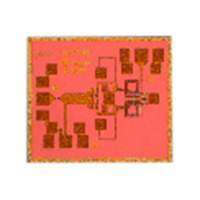ICGOO在线商城 > 射频/IF 和 RFID > RF 混频器 > LT5512EUF#PBF
- 型号: LT5512EUF#PBF
- 制造商: LINEAR TECHNOLOGY
- 库位|库存: xxxx|xxxx
- 要求:
| 数量阶梯 | 香港交货 | 国内含税 |
| +xxxx | $xxxx | ¥xxxx |
查看当月历史价格
查看今年历史价格
LT5512EUF#PBF产品简介:
ICGOO电子元器件商城为您提供LT5512EUF#PBF由LINEAR TECHNOLOGY设计生产,在icgoo商城现货销售,并且可以通过原厂、代理商等渠道进行代购。 LT5512EUF#PBF价格参考。LINEAR TECHNOLOGYLT5512EUF#PBF封装/规格:RF 混频器, RF Mixer IC Cellular, HF, ISM, PCS, UHF, VHF, WMTS Down Converter 1kHz ~ 3GHz 16-QFN (4x4)。您可以下载LT5512EUF#PBF参考资料、Datasheet数据手册功能说明书,资料中有LT5512EUF#PBF 详细功能的应用电路图电压和使用方法及教程。
LT5512EUF#PBF 是由 Linear Technology(现为 Analog Devices 旗下公司)生产的一款 RF 混频器,主要用于无线通信系统中的频率转换。其应用场景主要包括以下几个方面: 1. 无线基站和通信设备:适用于蜂窝通信基础设施,如 GSM、CDMA、WCDMA 和 LTE 基站的接收与发射路径中,实现信号的上变频或下变频。 2. 宽带通信系统:支持宽频带操作,适合用于多频段或多标准无线电系统,如软件定义无线电(SDR)平台。 3. 测试与测量设备:广泛应用于频谱分析仪、信号发生器等仪器中,用于精确的频率转换与信号处理。 4. 工业与医疗射频设备:可用于需要高线性度与低失真的射频信号处理场景,例如医疗成像设备中的射频前端。 5. 军事与航空航天通信系统:由于其良好的性能和稳定性,也适用于对可靠性要求较高的军用通信设备。 该器件采用紧凑的 TSSOP 封装,功耗较低,适合高密度电路设计,具备良好的端口隔离度和线性性能,有助于提升系统灵敏度与抗干扰能力。
| 参数 | 数值 |
| 产品目录 | |
| 描述 | IC MIXER 1KHZ-3GHZ DWN 16QFN |
| 产品分类 | |
| 品牌 | Linear Technology |
| 数据手册 | http://www.linear.com/docs/2539 |
| 产品图片 |
|
| 产品型号 | LT5512EUF#PBF |
| RF类型 | 手机,HF,ISM,PCS,UHF,VHF,WMTS |
| rohs | 无铅 / 符合限制有害物质指令(RoHS)规范要求 |
| 产品系列 | LT5512 |
| 产品目录页面 | |
| 供应商器件封装 | 16-QFN(4x4) |
| 其它名称 | LT5512EUFPBF |
| 包装 | 管件 |
| 噪声系数 | 14dB |
| 增益 | 1.1dB |
| 封装/外壳 | 16-WQFN 裸露焊盘 |
| 标准包装 | 91 |
| 混频器数 | 1 |
| 电压-电源 | 4.5 V ~ 5.25 V |
| 电流-电源 | 74mA |
| 辅助属性 | 降频变频器 |
| 频率 | 1kHz ~ 3GHz |

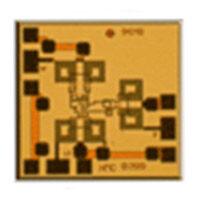
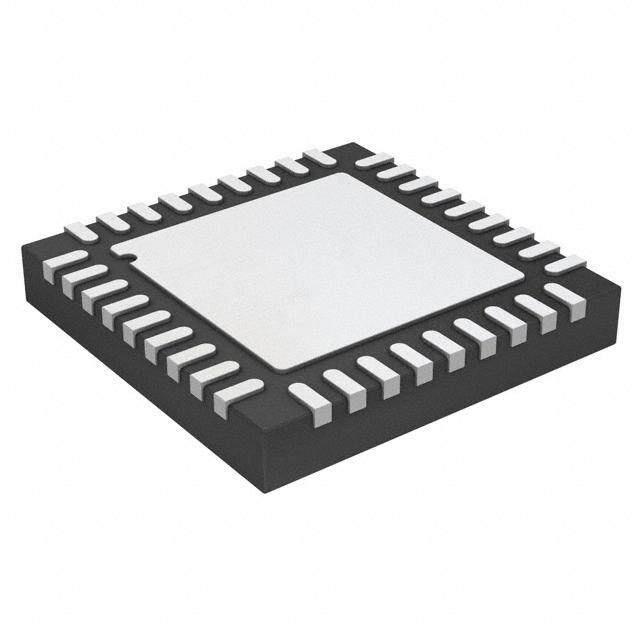

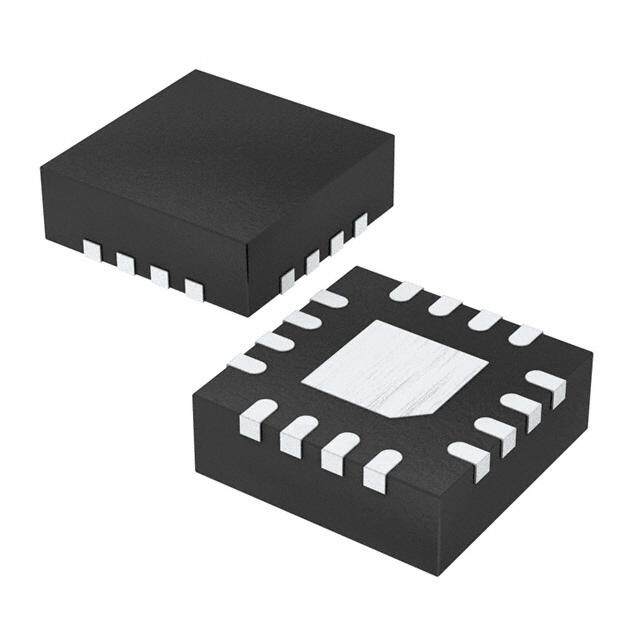
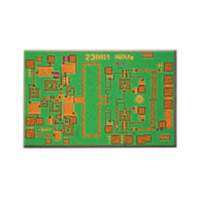

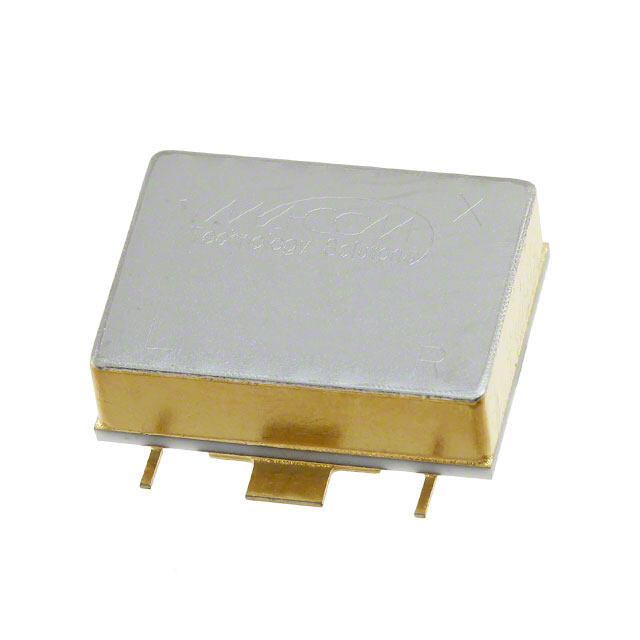


- 商务部:美国ITC正式对集成电路等产品启动337调查
- 曝三星4nm工艺存在良率问题 高通将骁龙8 Gen1或转产台积电
- 太阳诱电将投资9.5亿元在常州建新厂生产MLCC 预计2023年完工
- 英特尔发布欧洲新工厂建设计划 深化IDM 2.0 战略
- 台积电先进制程称霸业界 有大客户加持明年业绩稳了
- 达到5530亿美元!SIA预计今年全球半导体销售额将创下新高
- 英特尔拟将自动驾驶子公司Mobileye上市 估值或超500亿美元
- 三星加码芯片和SET,合并消费电子和移动部门,撤换高东真等 CEO
- 三星电子宣布重大人事变动 还合并消费电子和移动部门
- 海关总署:前11个月进口集成电路产品价值2.52万亿元 增长14.8%

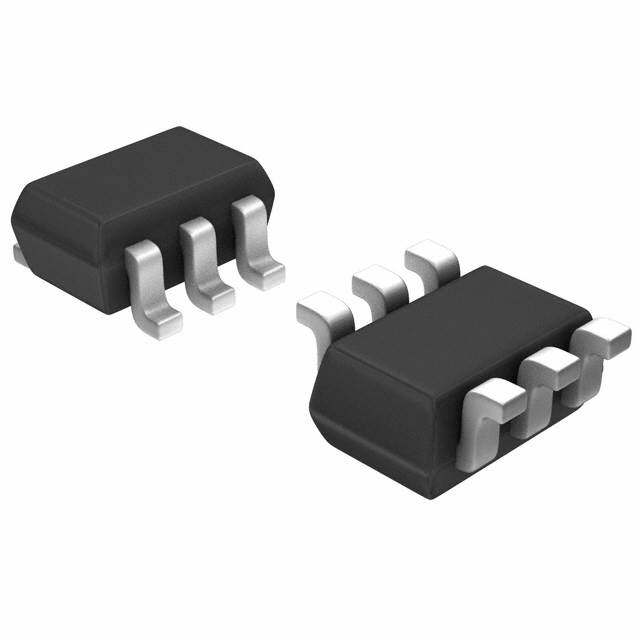
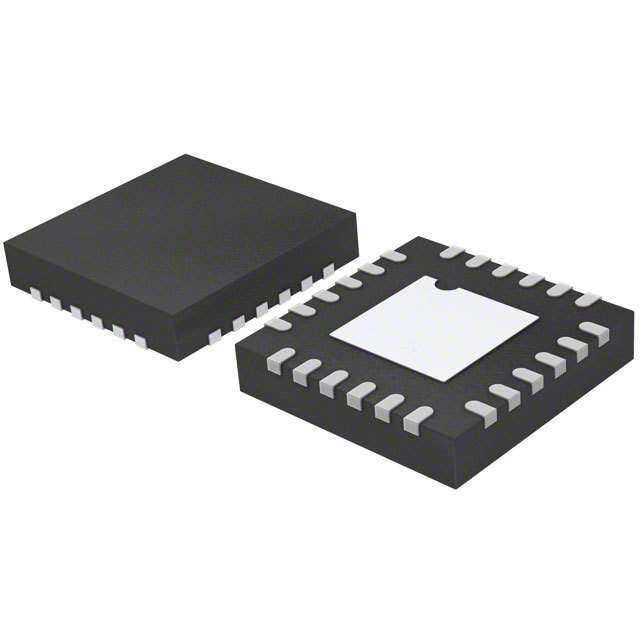



PDF Datasheet 数据手册内容提取
LT5512 1kHz-3GHz High Signal Level Active Mixer FEATURES DESCRIPTIOU ■ Broadband RF, LO and IF Operation The LT®5512 is an active double-balanced mixer IC, op- ■ High Input IP3: >20dBm from 30MHz to 900MHz timized for high linearity HF, VHF and UHF applications. +17dBm at 1900MHz The IC includes an integrated LO buffer amplifi er to drive ■ Typical Conversion Gain: 1dB the mixer and an RF buffer amplifi er for improved LO-RF ■ SSB Noise Figure: 11dB at 900MHz isolation. Internal bias circuits eliminate the need for 14dB at 1900MHz precision external resistors and allow the device to be ■ Integrated LO Buffer: Insensitive to LO Drive Level powered-down using the enable control (EN) pin. ■ Single-Ended or Differential LO Drive The externally matched RF and IF ports allow the mixer ■ High LO-RF Isolation to be used at very low frequencies, below 1MHz or up to ■ Enable Function 3GHz. The differential LO input is designed for single-ended ■ 4.5V to 5.25V Supply Voltage Range or a differential input drive. ■ 4mm × 4mm QFN Package The LT5512 is a high-linearity alternative to passive diode APPLICATIOUS mixers. Unlike passive mixers, which have conversion loss and require high LO drive levels, the LT5512 deliv- ■ HF/VHF/UHF Mixer ers conversion gain and requires signifi cantly lower LO ■ Cellular/PCS/UMTS Infrastructure drive levels. ■ High Linearity Mixer Applications , LTC and LT are registered trademarks of Linear Technology Corporation. ■ ISM Band Receivers All other trademarks are the property of their respective owners. ■ Wireless Medical Telemetry System (WMTS) TYPICAL APPLICATIOU Conv Gain, IIP3, NF and High Signal-Level Downmixer for 600MHz Wireless Medical Telemetry System LO Leakage vs LO Power 0.01µF 0.01µF 21 20 –5dBmL TOYIPN 100Ω 19 IIP3 TA = 25°C 608RMFHINz 6.8pF 6.8nH RLF+T551L2O+ LIOF–+ 1.8pF 8:1 I45F50OMΩUTHz SSB NF (dB), IIP3 (dBm) 1111937715 SSB NF RHILFFI OG= =- HI4 F6-5S1MI0DHMEzH LzO ––04200 LO LEAKAGE (dBm) TO 614MHz , C 50Ω 6.8nH 6.8pF RF– BIAS IF– G 53 LO-RF –60 47nH EN VCC2 VCC1 1 GC –80 –11 –9 –7 –5 –3 –1 1 EN VCC LO POWER (dBm) 5V 4.5V TO 5.25V 0.01µF 1µF 5512 TA01a 5512 TA01 5512fa 1
LT5512 ABSOLUTE WAXIWUW RATIUGS PACKAGE/ORDER IUFORWATIOU (Note 1) Supply Voltage (V , V , IF+, IF–) ........................5.5V TOP VIEW CC1 CC2 Enable Voltage .................................–0.3V to V + 0.3V C +O –O C CC N L L N LO+ to LO– Differential Voltage ..............................±1.5V 16 15 14 13 NC 1 12 GND ....................................................(+6dBm equivalent) RF+ to RF– Differential Voltage ...............................±0.7V RF+ 2 17 11 IF+ RF– 3 10 IF– ..................................................(+11dBm equivalent) NC 4 9 GND Operating Temperature Range .................–40°C to 85°C 5 6 7 8 Storage Temperature Range ...................–65°C to 125°C EN CC1 CC2 NC Junction Temperature (T ) ....................................125°C V V J UF PACKAGE 16-LEAD (4mm × 4mm) PLASTIC QFN TJMAX = 125°C, θJA = 37°C/W EXPOSED PAD IS GROUND (PIN 17) (MUST BE SOLDERED TO PCB) ORDER PART NUMBER PART MARKING LT5512EUF 5512 Order Options Tape and Reel: Add #TR Lead Free: Add #PBF Lead Free Tape and Reel: Add #TRPBF Lead Free Part Marking: http://www.linear.com/leadfree/ Consult LTC Marketing for parts specifi ed with wider operating temperature ranges. DC ELECTRICAL CHARACTERISTICS (Test Circuit Shown in Figure 2) V = 5V, EN = High, CC T = 25°C (Note 3), unless otherwise noted. A PARAMETER CONDITIONS MIN TYP MAX UNITS Enable (EN) Low = Off, High = On Turn On Time 3 μs Turn Off Time 13 μs Input Current V = 5V 50 μA ENABLE Enable = High (On) 3 V Enable = Low (Off) 0.3 V Power Supply Requirements (V ) CC Supply Voltage 4.5 5.25 V Supply Current 56 74 mA Shutdown Current EN = Low 100 μA AC ELECTRICAL CHARACTERISTICS PARAMETER CONDITIONS MIN TYP MAX UNITS RF Input Frequency Range Requires Appropriate Matching 0.001 to 3000 MHz LO Input Frequency Range Requires Appropriate Matching 0.001 to 3000 MHz IF Output Frequency Range Requires Appropriate Matching 0.001 to 2000 MHz LO Input Power 1kHz to 1700MHz (Resistive Match) –11 –5 1 dBm 1200MHz to 3000MHz (Reactive Match) –18 –10 –2 dBm 5512fa 2
LT5512 AC ELECTRICAL CHARACTERISTICS Downmixer Applications: (Test Circuits Shown in Figures 1 and 2) V = 5V, EN = High, T = 25°C, P = –10dBm (–10dBm/tone for two-tone IIP3 tests, Δf = 200kHz), High-Side LO at –5dBm for 45MHz, CC A RF 140MHz and 450MHz tests, Low-Side LO at –10dBm for 900MHz, 1900MHz and 2450MHz tests, unless otherwise noted. (Note 2, 3 and 4) PARAMETER CONDITIONS MIN TYP MAX UNITS Conversion Gain RF = 45MHz, IF = 2MHz 1 dB RF = 140MHz, IF = 10MHz 2 dB RF = 450MHz, IF = 70MHz 1.1 dB RF = 900MHz, IF = 170MHz 0 dB RF = 1900MHz, IF = 170MHz –1 1 dB RF = 2450MHz, IF = 240MHz 2 dB Conversion Gain vs Temperature T = –40°C to 85°C, RF = 900MHz –0.011 dB/°C A Input 3rd Order Intercept RF = 45MHz, IF = 2MHz 20.4 dBm RF = 140MHz, IF = 10MHz 20.7 dBm RF = 450MHz, IF = 70MHz 21.3 dBm RF = 900MHz, IF = 170MHz 21 dBm RF = 1900MHz, IF = 170MHz 17 dBm RF = 2450MHz, IF = 240MHz 13 dBm Single-Sideband Noise Figure RF = 140MHz, IF = 10MHz 10.3 dB RF = 450MHz, IF = 70MHz 10.3 dB RF = 900MHz, IF = 170MHz 11 dB RF = 1900MHz, IF = 170MHz 14 dB RF = 2450MHz, IF = 240MHz 13.4 dB LO to RF Leakage f = 250kHz to 700MHz (Figure 1) ≤–63 dBm LO f = 700MHz to 2500MHz (Figure 2) ≤–50 dBm LO LO to IF Leakage f = 250kHz to 500MHz (Figure 1) ≤–35 dBm LO f = 500MHz to 1250MHz (Figure 1) ≤–40 dBm LO f = 700MHz to 1500MHz (Figure 2) ≤–45 dBm LO f = 1500MHz to 1950MHz (Figure 2) ≤–40 dBm LO f = 1950MHz to 2500MHz (Figure 2) ≤–32 dBm LO RF to LO Isolation f = 250kHz to 800MHz (Figure 1) >61 dB RF f = 700MHz to 1200MHz (Figure 2) >49 dB RF f = 1200MHz to 1700MHz (Figure 2) >46 dB RF f = 1700MHz to 2500MHz (Figure 2) >43 dB RF 2RF-2LO Output Spurious Product 900MHz: f = 815MHz at –12dBm, f = 170MHz –66 dBc RF IF (f = f + f /2) 1900MHz: f = 1815MHz at –12dBm, f = 170MHz –59 dBc RF LO IF RF IF 3RF-3LO Output Spurious Product 900MHz: f = 786.67MHz at –12dBm, f = 170MHz –83 dBc RF IF (f = f + f /3) 1900MHz: f = 1786.67MHz at –12dBm, f = 170MHz –58 dBc RF LO IF RF IF Input 1dB Compression RF = 10MHz to 500MHz (Figure 1) 10.5 dBm RF = 900MHz (Figure 2) 10.1 dBm RF = 1900MHz (Figure 2) 6.2 dBm Note 1: Absolute Maximum Ratings are those values beyond which the life Note 3: Specifi cations over the –40°C to 85°C temperature range are of a device may be impaired. assured by design, characterization and correlation with statistical process Note 2: 45MHz, 140MHz and 450MHz performance measured on the test control. circuit shown in Figure 1. 900MHz, 1900MHz and 2450MHz performance Note 4: SSB Noise Figure measurements performed with a small-signal measured on the test circuit shown in Figure 2. noise source and bandpass fi lter on RF input and no other RF signal applied. 5512fa 3
LT5512 TYPICAL DC PERFORW A U CE CHARACTERISTICS (Test Circuit Shown Figure 2) Supply Current vs Supply Voltage Shutdown Current vs Supply Voltage 60 100 59 A) 58 TA = 85°C µA) LY CURRENT (m 55557654 TA T=A 2 =5 °–C40°C OWN CURRENT ( 10 TA = T8A5 °=C 25°C SUPP 53 HUTD 1 TA = –40°C 52 S 51 50 0.1 4.5 4.75 5.0 5.25 5.5 4.5 4.75 5.0 5.25 5.5 SUPPLY VOLTAGE (V) SUPPLY VOLTAGE (V) 5512 G01 5512 G02 TYPICAL AC PERFORW AU CE CHARACTERISTICS HF/VHF/UHF Downmixer Application V = 5V, EN = High, P = –10dBm (–10dBm/tone for 2-tone IIP3 tests, Δf = 200kHz), High-Side LO, P = –5dBm, CC RF LO unless otherwise noted. Test Circuit Shown in Figure 1. Conv Gain, IIP3 and LO Leakage Conv Gain, IIP3 and NF Conv Gain and IIP3 vs RF Frequency (140MHz App) vs LO Power (140MHz App) vs Supply Voltage (140MHz App) 22 0 22 22 1280 IIP3 ––2100 2108 IIP3 RTAF == 2154°0CMHz 1280 IIP3 G, SSB NF (dB), IIP3 (dBm)C 11114604286 IFG C= 10MHz LO–28-L455RO0°°F-CC°ICF –––––––98645730000000 LO LEAKAGE (dBm) G, SSB NF (dB), IIP3 (dBm)C 11114286406 GC SSB NF IF = 10MHz G(dB), IIP3 (dBm)C 11114604286 GC RIPFLF =O = 1= 10 –4M50–28HdM455Bz0°°HmCC°zC 2 –100 2 2 0 –110 0 0 90 115 140 165 190 –11 –9 –7 –5 –3 –1 1 4.5 4.75 5 5.25 5.5 RF FREQUENCY (MHz) LO INPUT POWER (dBm) SUPPLY VOLTAGE (V) 5512 G03 5512 G04 5512 G05 Conv Gain, IIP3 and LO Leakage Conv Gain, IIP3 and NF Conv Gain and IIP3 vs RF Frequency (450MHz App) vs LO Power (450MHz App) vs Supply Voltage (450MHz App) 22 0 22 22 20 –10 20 IIP3 20 IIP3 18 –20 18 18 IIP3 m) IF = 70MHz m) TA = 25°C B 16 –30 B 16 RF = 450MHz 16 G, SSB NF (dB), IIP3 (dC 111460428 LLOO–2-45-IR0°FCF°C ––––––986457000000 LO LEAKAGE (dBm) G, SSB NF (dB), IIP3 (dC 111460428 SSB NF IF = 70MHz G (dB), IIP3 (dBm)C 111460428 RIPFLF =O = 7= 40 –5M50–28HdM455Bz0°°HmCC°zC 2 GC 85°C –100 2 GC 2 GC 0 –110 0 0 400 425 450 475 500 –11 –9 –7 –5 –3 –1 1 4.5 4.75 5 5.25 5.5 RF FREQUENCY (MHz) LO INPUT POWER (dBm) SUPPLY VOLTAGE (V) 5512 G06 5512 G07 5512 G08 5512fa 4
LT5512 TYPICAL PERFORW AU CE CHARACTERISTICS (1900MHz Downmixer Application) V = 5V, EN = High, T = 25°C, 1900MHz RF input matching, P = –10dBm (–10dBm/tone for 2-tone IIP3 tests, Δf = 200kHz), CC A RF Low-Side LO, P = –10dBm, IF output measured at 170MHz, unless otherwise noted. Test circuit shown in Figure 2. LO Conv Gain, IIP3 and NF Conv Gain and IIP3 Conv Gain and IIP3 vs Temperature vs RF Frequency vs Supply Voltage RF = 1900MHz, IF = 170MHz 18 19 18 20 16 IIP3 18 16 TA = 25°C TA = –40°C 18 IIP3 14 17 m) 14 TA = 85°C m) 16 LOW-SIDE LO G (dB), IIP3 (dBm)C 1180426 SSB NF LHOITIGWFAH = -=-S S1 I2I7DD50E°EM C LLHOOz 1111145263 SSB NF (dB) CONV GAIN (dB), IIP3 (dB 1120864 ICITPOA3N =V –G4A0I°NC TA = 25°C TA = 85°C CONV GAIN (dB), IIP3 (dB 111420864 CONV GAINHHIGIGHH-S-SIDIDE EL OLO 2 GC 11 2 2 LOW-SIDE LO 0 10 0 0 1700 1800 1900 2000 2100 4.5 4.75 5.0 5.25 5.5 –50 –25 0 25 50 75 100 RF FREQUENCY (MHz) SUPPLY VOLTAGE (V) TEMPERATURE (°C) 5512 G09 5512 G10 5512 G11 Conv Gain, IIP3 and NF Output IF Power and Output IM3 LO-IF and LO-RF Leakage vs LO Input Power vs RF Input Power (2 Input Tones) vs LO Input Power 20 20 10 –20 18 IIP3 19 0 TA = –40°C –25 fTLAO = = 2 157°3C0MHz G (dB), IIP3 (dBm)C 1111268046 SSB NF –284550°°CC°C 111111634578 SSB NF (dB) P, IM3 (dBm/TONE) OUT––––––123456000000 POUT TA = I2M53°CTA = 85°CTAT =A =8 5–°4C0°C LO LEAKAGE (dBm) –––––3344505050 LO-IF 4 12 –70 LO-RF 2 GC 11 –80 TA = 25°C –55 0 10 –90 –60 –18 –16 –14 –12 –10 –8 –6 –4 –2 –21 –18 –15 –12 –9 –6 –3 0 3 –18 –16 –14 –12 –10 –8 –6 –4 –2 LO INPUT POWER (dBm) RF INPUT POWER (dBm/TONE) LO INPUT POWER (dBm) 5512 G12 5512 G13 5512 G14 IF Output Power, 2RF-2LO and 2RF-2LO (Half-IF) Spur Level 3RF-3LO Spur Level 3RF-3LO vs RF Input Power vs LO Input Power vs LO Input Power 10 TA = 25°C –50 TA = 25°C –50 TA = 25°C fLO = 1730MHz –55 fLO = 1730MHz –55 fLO = 1730MHz –10 PLO = –10dBm POUT fRF = 1815MHz fRF = 1786.67MHz (RF = 1900MHz) m) –60 –60 R (dB–30 3RF-3LO dBm) –65 dBm) –65 PRF = –10dBm UT POWE–50 (RF = 1786.67MHz)2RF-2LO R LEVEL ( –70 PRF = –10dBm R LEVEL ( –70 OUTP–70 (RF = 1815MHz) SPU –75 SPU –75 IF –80 PRF = –16dBm –80 PRF = –16dBm –90 –85 –85 –110 –90 –90 –22 –19 –16 –13 –10 –7 –4 –1 2 –18 –16 –14 –12 –10 –8 –6 –4 –2 –18 –16 –14 –12 –10 –8 –6 –4 –2 RF INPUT POWER (dBm) 5512 G15 LO INPUT POWER (dBm) 5512 G16 LO INPUT POWER (dBm) 5512 G17 5512fa 5
LT5512 PIU FUUCTIOUS NC (Pins 1, 4, 8, 13, 16): Not connected internally. These externally connected to the other VCC pins, and decoupled pins should be grounded on the circuit board for improved with 0.01μF and 1μF capacitors. LO to RF and LO to IF isolation. GND (Pins 9 and 12): Ground. These pins are internally RF+, RF– (Pins 2, 3): Differential Inputs for the RF Sig- connected to the backside ground for better isolation. They nal. These pins must be driven with a differential signal. should be connected to RF ground on the circuit board, Each pin must be connected to a DC ground capable of although they are not intended to replace the primary sinking 15mA (30mA total). This DC bias return can be grounding through the backside contact of the package. accomplished through the center-tap of a balun, or with IF–, IF+ (Pins 10, 11): Differential Outputs for the IF shunt inductors. An impedance transformation is required Signal. An impedance transformation may be required to to match the RF input to 50Ω (or 75Ω). match the outputs. These pins must be connected to V CC EN (Pin 5): Enable Pin. When the input voltage is higher through impedance matching inductors, RF chokes or a than 3V, the mixer circuits supplied through Pins 6, 7, 10, transformer center-tap. and 11 are enabled. When the input voltage is less than LO–, LO+ (Pins 14, 15): Differential Inputs for the Local 0.3V, all circuits are disabled. Typical enable pin input Oscillator Signal. They can also be driven single-ended by current is 50μA for EN = 5V and 0μA when EN = 0V. connecting one to an RF ground through a DC blocking V (Pin 6): Power Supply Pin for the LO Buffer Circuits. capacitor. These pins are internally biased to 2V; thus, DC CC1 Typical current consumption is 22mA. This pin should be blocking capacitors are required. An impedance transfor- externally connected to the other V pins, and decoupled mation or matching resistor is required to match the LO CC with 0.01μF and 1μF capacitors. input to 50Ω (or 75Ω). V (Pin 7): Power Supply Pin for the Bias Circuits. GROUND (Pin 17): (Backside Contact): Circuit Ground CC2 Typical current consumption is 4mA. This pin should be Return for the Entire IC. This must be soldered to the printed circuit board ground plane. BLOCK DIAGRAW BACKSIDE GROUND 17 LINEAR 12 GND + AMPLIFIER DOUBLE-BALANCED RF 2 MIXER + 15mA 11 IF 15mA 10 IF– RF– 3 9 GND HIGH-SPEED LO+ 15 LO BUFFER LO– 14 BIAS 5 EN 6 7 VCC1 VCC2 5512 BD 5512fa 6
LT5512 TEST CIRCUITS C6 C7 R1 LOIN –5dBm 16 15 14 13 NC LO+ LO– NC T1 1 12 T2 1:1 L1 NC GND 8:1 6 1 1 6 RFIN 2 2 RF+ IF+ 11 2 I0F.O1UMTHz TO 100MHz 4 3 C4 3 RF– LLTT55551122 IF– 10 C3 3 4 L2 4 9 NC GND EN VCC1 VCC2 NC RF INPUT MATCHING EN 5 6 7 8 RF(MHz) T1 L1, L2 C4 5V VCC 0.25 - 250 WBC4-4L --- 39pF 4.5V TO 5.25V 45 47nH 100pF C1 C2 70 27nH 68pF 5512 F01 140 WBC1-1TL 12nH 33pF 240 6.8nH 18pF 380 5.6nH 12pF 450 4.7nH 10pF REF DES VALUE SIZE PART NUMBER REF DES VALUE SIZE PART NUMBER R1 100Ω 0402 AAC CR05-101J C4 See Table 0402 AVX 0402 C1, C6, C7 0.01µF 0402 AVX 04023C103JAT L1, L2 See Table 0402 Toko LL1005-FH C2 1µF 0603 AVX 0603ZD105KAT T1 1:1 Coilcraft WBC1-1TL C3 1.8pF 0402 AVX 04025A1R8BAT T2 8:1 Mini-Circuits TC8-1 Figure 1. Test Schematic for HF/VHF/UHF Downmixer Applications C6 C7 RF LOIN 0.018" ER = 4.4 –10dBm GND 0.062" L3 DC 0.018" 17 16 15 14 13 GND NC LO+ LO– NC T1 ZLO = = 2 7m2mΩ 1 NC GND 12 T2 RFIN 1 4 2 RF+ IF+ 11 L1 1 6 IFOUT 2 5 3 C4 3 RF– LLTT55551122 IF– 10 C3 C5 3 4 ZO = 72Ω 4 NC GND 9 L2 L = 2mm EN VCC1 VCC2 NC 5 6 7 8 EN R1 VCC APPLICATION (MHz) T1 (MURATA) C4 L3 C3 C1 C2 900 RF/170 IF LDB21881M05C-001 3.9pF 22nH 6.8pF 1900 RF/170 IF LDB211G9010C-001 1.5pF 5.6nH 6.8pF 5512 F02 2450 RF/240 IF LDB212G4020C-001 1.2pF 4.7nH 3.3pF REF DES VALUE SIZE PART NUMBER REF DES VALUE SIZE PART NUMBER C5, C6, C7 100pF 0402 Murata GRP1555C1H101J L1, L2 47nH 0402 Coilcraft 0402CS-47NX C1 0.01µF 0402 Murata GRP155R71C103K L3 See Table 0402 Toko LL1005-FH C2 1.0µF 0603 Taiyo Yuden LMK107F105ZA R1 10 0402 C4 See Table 0402 Murata GRP1555C T1 See Table Murata LDB21 Series C3 See Table 0402 Murata GRP1555C T2 8:1 Mini-Circuits TC8-1 Figure 2. Test Schematic for 900MHz to 2.5GHz Downmixer Applications 5512fa 7
LT5512 APPLICATIOUS IUFORWATIOU The LT5512 consists of a double-balanced mixer, RF buffer capable of sinking 15mA. This can be accomplished with amplifi er, high-speed limiting LO buffer and bias/enable the center-tap of a balun as shown in Figure 3, or with circuits. The differential RF, LO and IF ports require simple bias chokes connected from Pins 2 and 3 to ground, if a external matching which allows the mixer to be used at differential RF input signal is available. The value of the very low frequencies, below 1MHz, or up to 3GHz. Low bias chokes should be high enough to avoid reducing the side or high side LO injection can be used. input impedance at the frequency of interest. Two evaluation circuits are available. The HF/VHF/UHF Table 1 lists the differential input impedance and differen- evaluation circuit is shown in Figure 1 and the 900MHz tial refl ection coeffi cient between Pins 2 and 3 for several to 2.5GHz evaluation circuit is shown in Figure 2. The common RF frequencies. As shown in Figures 3 and 4, corresponding demo board layouts are shown in Figures low-pass impedance matching is used to transform the 10 and 11, respectively. differential input impedance up to the desired value for the balun input. The following example shows how to RF Input Port design the low-pass impedance transformation network for the RF input. A simplifi ed schematic of the differential RF input is shown in Figure 3, with the associated external imped- From Table 1, the differential input impedance at 450MHz ance matching elements for a 450MHz application. Each is 18.1 + j5.2. As shown in Figure 4, the 5.2Ω reactance is RF input requires a low resistance DC return to ground split, with one half on each side of the 18.1Ω load resistor. The matching network will consist of additional inductance LT5512 in series with the internal inductance and a capacitor in parallel with the desired 50Ω source impedance. The ca- VBIAS pacitance (C4) and inductance are calculated as follows. VCC Q= (R /R )–1= (50/18.1)–1=1.328 15mA 15mA S L Q 1.328 C4= = =9.4pF (use 10pF) 2 3 ωR 2ππ•450MHz•50 S L1 C4 L2 4.7nH 10pF 4.7nH R •Q 118.1•1.328 L1, L2= L = 2ω 2•2π•450MHz = 4.2nH (use 4.7nH)) Table 1. RF Input Differential Impedance 1:1 RFIN Frequency Differential Input Differential S11 50Ω 5512 F03 (MHz) Impedance Mag Angle 10 18.2 + j0.14 0.467 179.6 Figure 3. RF Input with External Matching for a 450MHz Application 44 18 + j0.26 0.470 178.6 240 18.1 + j2.8 0.471 172.6 L1 1/2 XINT 450 18.1 + j5.2 0.473 166.3 2 j2.6 950 18.7 + j11.3 0.479 150.8 RS RL 50Ω C4 L2 1/2 XINT 18.1Ω 1900 20.6 + j22.8 0.503 124.3 3 j2.6 2150 21.4 + j26.5 0.512 116.9 LT5512 5512 F04 2450 22.5 + j30.5 0.522 109.2 Figure 4. 450MHz RF Input Matching 2700 24.1 + j34.7 0.530 101.7 5512fa 8
LT5512 APPLICATIOUS IUFORWATIOU 0 Table 2. LO Input Differential Impedance –5 Frequency Differential Input Differential S11 B) (MHz) Impedance SS (d–10 Mag Angle O 750 263 + j172 0.766 –10.2 L N UR–15 1000 213 + j178 0.760 –13.4 T RE 900MHz 1250 175 + j173 0.752 –16.6 T R–20 PO 1500 146 + j164 0.743 –19.8 F R –25 1750 125 + j153 0.733 –22.8 140MHz 450MHz 1900MHz 2000 108 + j142 0.722 –25.8 –30 50 100 1000 3000 2250 95 + j131 0.709 –28.9 RF FREQUENCY (MHz) 2500 86 + j122 0.695 –31.8 5512 F05 2750 78 + j133 0.68 –34.6 Figure 5. RF Input Return Loss (140MHz, 450MHz, 900MHz and 1900MHz Matching) At high frequencies (greater than 900MHz), this same A simplifi ed schematic of the LO input is shown in Figure matching technique is used, but it is important to consider 6 with simple resistive matching and DC blocking capaci- the IC’s input reactance when calculating the external induc- tors. This is the preferred matching for LO frequencies tance. As shown in Figure 2, the high-frequency evaluation below 1.5GHz. The internal (DC) resistance is 400Ω. The board uses short (2mm) 72Ω microstrip lines to realize required LO drive at the IC is 150mV (typical) which RMS the required inductance, instead of chip inductors. can come from a 50Ω source, or a higher impedance source such as PECL. The external matching resistor is External matching values for several frequencies, ranging required only to reduce the amplitude of the LO signal from 45MHz to 2.45GHz are shown in Figures 1 and 2. at the IC, although the input stage will tolerate 10dB of Measured RF input return losses are plotted in Figure 5. overdrive without signifi cant performance degradation. Resistive LO port matching is used on the low-frequency LO Input Port evaluation board (see Figure 1). The LO buffer amplifi er consists of high-speed limiting Above 1.5GHz, the internal capacitance becomes signifi cant differential amplifi ers, designed to drive the mixer quad for high linearity. The LO+ and LO– pins are designed for and reactive matching to 50Ω with a single series induc- tor and DC blocking capacitors is preferred. A schematic differential or single-ended drive. Both LO pins are inter- is shown in Figure 7. Table 2 lists the differential input nally biased to 2V . DC LO+ C6 2V –5LdOBmIN 0.01µF 15 200Ω 200Ω L5O0ΩIN L3 15LO+ 200Ω 2V 200Ω –10dBm C6 R1 VCC 100pF 0.0C17µF 100Ω C7 VCC 100pF 14 LO– 14 LT5512 LO– LT5512 5512 F07 5512 F06 Figure 6. LO Input with Resistive Matching Figure 7. LO Input with Reactive Matching 5512fa 9
LT5512 APPLICATIOUS IUFORWATIOU 0 close as possible to the IF+/IF– pins. Even small amounts of inductance in series with C3 (such as through a via) –5 can signifi cantly degrade IIP3. The value of C3 should be dB)–10 reduced by the value of internal capacitance (see Table 3). SS ( 4.7nH This matching network is simple and offers good selectivity LO–15 5.6nH N 6.8nH for narrow band IF applications. R U T RE–20 For IF frequencies below 100MHz, the simplest IF matching 8.2nH technique is an 8:1 transformer connected across the IF –25 pins as shown in Figure 1. DC bias to the IF+ and IF– pins 10nH –30 is provided through the transformer’s center-tap. A small 0 500 100015002000 250030003500 4000 FREQUENCY (MHz) value IF capacitor (C3) improves the LO-IF leakage and 1573 F08 attenuates the undesired image frequency. No inductors Figure 8. Single-Ended LO Port Return Loss are required. vs Frequency for Various Values of L3 Table 3. IF Output Differential Impedance (Parallel Equivalent) impedance and differential refl ection coeffi cient between the LO+ and LO– pins. This information can be used to Frequency Differential Output Differential S11 (MHz) Impedance compute the value of the series matching inductor, L3. Mag Angle Alternatively, Figure 8 shows measured LO input return 10 396 II - j10k 0.766 0 loss versus frequency for various values of L3. Reactive 70 394 II - j5445 0.775 –1.1 LO port matching is used on the high-frequency evaluation 170 393 II - j2112 0.774 –2.8 board (see Figure 2). 240 392 II - j1507 0.773 –3.9 450 387 II - j798 0.772 –7.3 IF Output Port 750 377 II - j478 0.768 –12.2 The differential IF outputs, IF+ and IF–, are internally con- 860 371 II - j416 0.766 –14.0 nected to the collectors of the mixer switching transistors 1000 363 II - j359 0.762 –16.2 as shown in Figure 9. These outputs should be combined 1250 363 II - j295 0.764 –19.6 externally through an RF balun or 180° hybrid to achieve 1500 346 II -j244 0.756 –23.6 optimum performance. Both pins must be biased at the 1900 317 II - j192 0.743 –29.9 supply voltage, which can be applied through matching inductors (see Figure 2), or through the center-tap of an output transformer (see Figure 1). These pins are protected LT5512 with ESD diodes; the diodes allow peak AC signal swing 11 IF+ up to 1.3V above V . CC L1 TO As shown in Table 3, the IF output differential impedance is approximately 390Ω in parallel with 0.44pF. A simple 400Ω C3 VCC DFIILFTFEERR EONRT IAL BALUN band-pass IF matching network suitable for wireless ap- L2 plications is shown in Figure 9. Here, L1, L2 and C3 set the IF– 10 desired IF output frequency. The 390Ω differential output can then be applied directly to a differential fi lter, or an 5512 F09 8:1 balun for impedance transformation down to 50Ω. Figure 9. IF Output Equivalent Circuit with Band-Pass Matching Elements To achieve maximum linearity, C3 should be located as 5512fa 10
LT5512 PACKAGE DESCRIPTIOU UF Package 16-Lead Plastic QFN (4mm × 4mm) (Reference LTC DWG # 05-08-1692) 0.72 ±0.05 4.35 ± 0.05 2.15 ± 0.05 2.90 ± 0.05 (4 SIDES) PACKAGE OUTLINE 0.30 ±0.05 0.65 BCS RECOMMENDED SOLDER PAD PITCH AND DIMENSIONS BOTTOM VIEW—EXPOSED PAD 4.00 ± 0.10 0.75 ± 0.05 R = 0.115 0.55 ± 0.20 (4 SIDES) TYP 15 16 PIN 1 1 2 2.15 ± 0.10 (4-SIDES) (UF) QFN 0102 0.200 REF 0.30 ± 0.05 0.00 – 0.05 0.65 BSC NOTE: 1. DRAWING CONFORMS TO JEDEC PACKAGE OUTLINE MO-220 VARIATION (WGGC) 2. ALL DIMENSIONS ARE IN MILLIMETERS 3. DIMENSIONS OF EXPOSED PAD ON BOTTOM OF PACKAGE DO NOT INCLUDE MOLD FLASH. MOLD FLASH, IF PRESENT, SHALL NOT EXCEED 0.15mm ON ANY SIDE 4. EXPOSED PAD SHALL BE SOLDER PLATED 5512fa Information furnished by Linear Technology Corporation is believed to be accurate and reliable. 11 However, no responsibility is assumed for its use. Linear Technology Corporation makes no representa- tion that the interconnection of its circuits as described herein will not infringe on existing patent rights.
LT5512 APPLICATIOUS IUFORWATIOU LO LO RF IF RF IF Figure 10. HF/VHF/UHF Evaluation Board Layout Figure 11. High-Frequency Evaluation Board Layout (DC933A) (DC478B) RELATED PARTS PART NUMBER DESCRIPTION COMMENTS Infrastructure LT5511 High Linearity Upconverting Mixer RF Output to 3GHz, 17dBm IIP3, Integrated LO Buffer LT5514 Ultralow Distortion, IF Amplifi er/ADC Driver with 850MHz Bandwidth, 47dBm OIP3 at 100MHz, 10.5dB to 33dB Gain Control Digitally Controlled Gain Range LT5515 1.5GHz to 2.5GHz Direct Conversion Quadrature 20dBm IIP3, Integrated LO Quadrature Generator Demodulator LT5516 0.8GHz to 1.5GHz Direct Conversion Quadrature 21.5dBm IIP3, Integrated LO Quadrature Generator Demodulator LT5517 40MHz to 900MHz Quadrature Demodulator 21dBm IIP3, Integrated LO Quadrature Generator LT5519 0.7GHz to 1.4GHz High Linearity Upconverting 17.1dBm IIP3 at 1GHz, Integrated RF Output Transformer with 50Ω Matching, Mixer Single-Ended LO and RF Ports Operation LT5520 1.3GHz to 2.3GHz High Linearity Upconverting 15.9dBm IIP3 at 1.9GHz, Integrated RF Output Transformer with 50Ω Matching, Mixer Single-Ended LO and RF Ports Operation LT5521 10MHz to 3700MHz High Linearity Upconverting 24.2dBm IIP3 at 1.95GHz, NF = 12.5dB, 3.15V to 5.25V Supply, Single-Ended LO Mixer Port Operation LT5522 400MHz to 2.7GHz High Signal Level 4.5V to 5.25V Supply, 25dBm IIP3 at 900MHz, NF = 12.5dB, 50Ω Single-Ended Downconverting Mixer RF and LO Ports LT5524 Low Power, Low Distortion ADC Driver with 450MHz Bandwidth, 40dBm OIP3, 4.5dB to 27dB Gain Control Digitally Programmable Gain LT5525 High Linearity, Low Power Downconverting Mixer Single-Ended 50Ω RF and LO Ports, 17.6dBm IIP3 at 1900MHz, I = 28mA CC LT5526 High Linearity, Low Power Downconverting Mixer 3V to 5.3V Supply, 16.5dBm IIP3, 100kHz to 2GHz RF, NF = 11dB, I = 28mA, CC –65dBm LO-RF Leakage LT5527 400MHz to 3.7GHz High Signal Level Single-Ended 50Ω RF and LO Ports, 23.5dBm IIP3 at 1.9GHz Downconverting Mixer LT5528 1.5GHz to 2.4GHz High Linearity Direct I/Q 21.8dBm OIP3 at 2GHz, –159dBm/Hz Noise Floor, 50Ω Interface at all Ports Modulator 5512fa 12 Linear Technology Corporation LT/LT 1005 REV A • PRINTED IN USA 1630 McCarthy Blvd., Milpitas, CA 95035-7417 (408) 432-1900 ● FAX: (408) 434-0507 ● www.linear.com © LINEAR TECHNOLOGY CORPORATION 2005
Mouser Electronics Authorized Distributor Click to View Pricing, Inventory, Delivery & Lifecycle Information: A nalog Devices Inc.: LT5512EUF#PBF LT5512EUF#TR LT5512EUF LT5512EUF#TRPBF

 Datasheet下载
Datasheet下载
